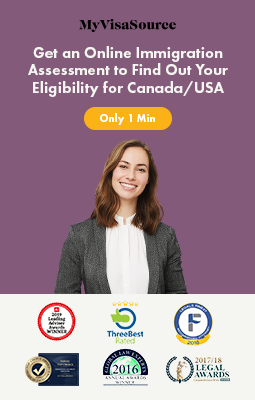Employment Sponsored Visa
A variety of temporary work visas exist, and each will allow you to stay in the US for a specific or definite amount of time. By obtaining an employment-based green card, you will be considered a permanent resident due to your employment status. Each option has different requirements, and it is important to determine for which you may be eligible.
To work in the United States, you must obtain a work visa. There are several different types of work visas available for foreign individuals who are interested in working in the United States temporarily, including H-1B Visas, E Visas, L Visas, O Visas, and NAFTA Work Visas.
EB-1 Visa: First Priority Workers
The EB–1 Visa is for individuals and their family members who are seeking employment-based permanent residence in the US. It applies to foreign nationals who have extraordinary abilities, are outstanding professors or researchers, or are managers or executives of foreign companies.
To be eligible for the EB-1 visa, applicants must demonstrate extraordinary ability in athletics, arts, business, education, or sciences through sustained national or international acclaim. Your achievements must be recognized in your field through extensive documentation. An offer of employment is not required.
EB-2 Visa: Second Priority Workers
The EB-2 is known as a second preference, employment-based immigrant visa for people in professions who hold an advanced degree or its equivalent, or for people who have an exceptional ability. The EB-2 facilitates permanent residence/green card and is available to individuals, family members, and business owners who are seeking permanent residency.
Labour certification is required unless the applicant can obtain a national interest waiver.
National interest waivers are usually granted to those who have exceptional ability and whose employment in the United States would greatly benefit the nation.
EB-3, EW-3 Visas: Third Priority Workers
The EB-3 and EW-3 third preference visas are for individuals, families, and businesses seeking permanent residence as skilled workers, professionals, or other workers, otherwise known as unskilled workers.
To qualify as a skilled worker, you must have a minimum of two years of training or work experience. The job you have been offered must be temporary or seasonal and there must be no qualified US workers for the job.
To qualify as a professional, you must have at least a US baccalaureate degree or a foreign equivalent that is the normal requirement for entry into the occupation. There must be no qualified US workers available for the job you will perform.
To qualify as an unskilled worker, you must be capable of performing unskilled labour that requires less than two years of training or experience, that is not of a temporary or seasonal nature, for which qualified workers are not available in the United States.
EB-4 visa: Fourth Priority Workers – Certain Special Immigrants
The EB-4 immigrant visa is specified as an employment-based green card for special immigrant religious workers. It is generally intended for members of a non-profit religious denomination in the United States, however, the category can cover a broad range of applicants.
Applicants can include broadcasters, Iraqi and Afghan translators, Iraqis who have provided aid to the U.S., employees of an international organization, members of armed forces, employees of the Panama Canal, physicians, retired employees of NATO-6, and spouses or children of NATO-6 employees (deceased or alive).
EB5 visas: Fifth Priority Workers
To be eligible for the EB-5 Immigrant Investor Visa, applicants must have a minimum of $1.8 million USD to invest or a minimum of $900,000 USD to invest in a Targeted Employment Area (TEA). A TEA is an area which, at the time of investment, is a rural area or an area which has experienced unemployment of at least 150% of the the national average (3.5%).
An investment in a commercial enterprise in the United States must be made and the applicant must plan to create or preserve ten permanent full-time jobs for qualified US workers. Investors must only put money toward commercial enterprises that were established after November 29, 1990 that make a profit from the sale of the goods or services they sell.
The EB-5 is an employment-based, fifth preference immigrant visa for individuals, families, businesses, and investors seeking permanent residency. The EB-5 program was created by US Congress in 1990. The purpose of the EB-5 is to stimulate the US economy through job creation and capital investment by foreign investors.
US Immigrant Visa Application Process
The US Visa application process has 8 steps: check if you need a visa, choose the type of US visa you will apply for, fill in the non-immigrant visa application form DS-160, pay your application fee(s), schedule a visa interview, compile the document file, attend the visa interview, and wait for processing.
You need to check if you need a visa first because you could be a citizen of a country that is eligible to travel to the US under the Visa Waiver Program and might not have to go through the application process.
Once you choose which visa you will apply for, you need to fill out the DS-160 form, which is the online nonimmigrant US visa application form and it can be found online on the website of the US consulate from which you are applying.
How to Apply for Nonimmigrant Visas to the US
The US Visa application process has 8 steps: check if you need a visa, choose the type of US visa you will apply for, fill in the non-immigrant visa application form DS-160, pay your application fee(s), schedule a visa interview, compile the document file, attend the visa interview, and wait for processing.
You need to check if you need a visa first because you could be a citizen of a country that is eligible to travel to the US under the Visa Waiver Program and might not have to go through the application process.
Choose an Agent
Your first step to apply for a nonimmigrant visa to the US is to choose an agent.
Your agent will receive communication about your case. You may act as your own agent or you may choose your petitioner, a family member, friend, attorney, immigration professional, or any other person you trust. You may have an agent that represented you and the petitioner in the petition process with USCIS. However, you will need to formally select an agent to represent you for your visa processing.
Pay the Us Immigrant Visa Fees
Nonimmigrant visa applicants must pay the machine-readable visa application fee shown on the schedule below. The fee is based on the purpose of the trip or visa category.
To pay the fee, the applicant must have their passport number available. The applicant’s passport number will be tied to the MRV (visa processing) fee paid at he bank. Upon payment of the MRV fee, a unique identification number (UID) will be provided for the applicant in order to access the appointment system and to keep tract of the passport delivery.
Submit Us Immigrant Visa Application Form
Once you choose which visa you will apply for, you need to fill out the DS-160 form, which is the online nonimmigrant US visa application form and it can be found online on the website of the US consulate from which you are applying.
Submit Supporting Documents for Us Immigrant Visas
The documents required for US immigrant visas include an original passport with a six month validity beyond expected arrival date in the US, any old passports you have with you, one photograph per specification, proof of paid Visa application fees, and a printout of the US interview appointment letter.
Attend Your Interview
After submitting your US immigrant visa application form and submitting all necessary documents, you will attend an interview at the nearest US embassy or consulate to you. They will ultimately determine whether they will issue you the visa or not. Interviews last no more than 10 minutes.
Permanent (Immigrant) Worker Visa
Permanent work visas enable foreign nationals to work and live permanently in the United States. Permanent residents are subjected to fewer restrictions than workers with temporary visas. People with a permanent work visa can also apply for U.S. citizenship. Employers must file a petition with USCIS for the worker to get their permanent visa.
Working in the United States
If you have the right combination of skills, education, and/or work experience, you may be able to live and work permanently in the United States by seeking an employment-based immigrant visa.
What are the US Immigration Forms?
More often than not foreign citizens in America experience difficulties with the variety of Immigration Application Forms. Starting with legally changing your name, filing a Green Card application, adjustment of status and going all the way through condition on status removal - no matter the form, each one of them has its own requirements, specifications, deadlines and processing time.
The United States Citizenship and Immigration Services (USCIS) has created a number of different forms for all the cases a foreign citizen may experience while in the States, with the aim of serving all emerging needs of each particular matter.
Merit Based Immigration
In the style of many countries such as Canada, Australia, and New Zealand, the US also wants to implement a Merit Based Immigration approach. This would mean that anyone who applies for a visa would need to fulfill certain requirements and pass a threshold of points to get a Merit Based visa.
This results in a "points calculator", with factors like age, employment status, experience, and home country causing your merit score to go up or down. The higher your merit, the more likely issuance of a US Visa will occur.
Health Insurance Coverage for Immigrants in the United States
Immigrant families have important details to consider in the Health Insurance Marketplace. Most people in the following groups are eligible for coverage through the Health Insurance Marketplace: US citizens, US nationals, and lawfully present immigrants.
Undocumented immigrants aren’t eligible to buy Marketplace health coverage, or for premium tax credits and other savings on Marketplace plans. But they may apply for coverage on behalf of documented individuals.







